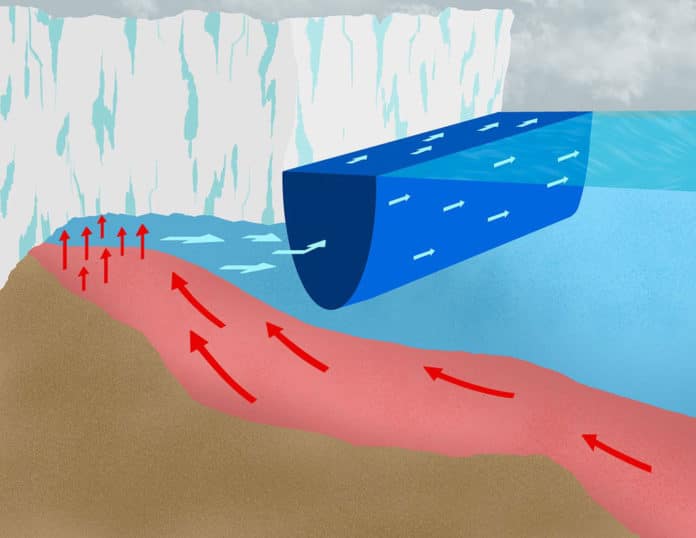West Antarctica is undergoing rapid changes associated with both atmospheric and oceanic warming. This atmospheric warming, coupled with increased ocean temperature along the West Antarctic Peninsula, has led to glacier retreat along the coast.
Scientists at Caltech and JPL have developed a new model suggesting that Antarctica’s ice shelves may be melting at an accelerated rate, which could eventually contribute to a more rapid sea level rise.
Their model considers an often-overlooked narrow ocean current along the Antarctic coast. It simulates how rapidly flowing freshwater, melted from the ice shelves, can trap dense, warm ocean water at the base of the ice, causing it to warm and melt even more.
Andy Thompson, professor of environmental science and engineering, said, “If this mechanism that we’ve been studying is active in the real world, it may mean that ice shelf melt rates are 20 to 40 percent higher than the predictions in global climate models, which typically cannot simulate these strong currents near the Antarctic coast.”
Scientists mainly focused on West Antarctic Peninsula. The team has previously deployed autonomous vehicles in this region, and scientists have used data from instrumented elephant seals to measure temperature and salinity in the water and ice.
The model considers the narrow Antarctic Coastal Current that runs counterclockwise around the entire Antarctic continent, a current that many climate models do not include because it is so small.
Senior research scientist Mar Flexas said, “Large global climate models don’t include this coastal current because it’s very narrow—only about 20 kilometers wide, while most climate models only capture currents that are 100 kilometers across or larger. So, there is a potential for those models do not represent future melt rates very accurately.”
The model shows how the coastal current carries freshwater from the WAP’s ice melt as it travels across the continent. Less thick freshwater travels swiftly close to the ocean’s surface and traps relatively warm ocean seawater against the underside of ice shelves. After that, the ice shelves start to melt from below.
In this method, more meltwater from the WAP can spread global warming across the Coastal Current, which can speed up melting even at West Antarctic ice shelves thousands of kilometres away from the peninsula. The rapid volume loss from West Antarctic ice shelves in recent decades may be partially explained by this remote warming mechanism.
Thompson said, “There are aspects of the climate system that we are still discovering. As we’ve progressed in our ability to model interactions between the ocean, ice shelves, and atmosphere, we can make more accurate predictions with better constraints on uncertainty. We may need to revisit some of the predictions of sea level rise in the next decades or century—that’s work we’ll do going forward.”
Journal Reference:
- M. Mar Flexas, Andrew F. Thompson et al. Antarctic Peninsula warming triggers enhanced basal melt rates throughout West Antarctica. Science Advances. vol 8, Issue 32. DOI: 10.1126/sciadv.abj9134
